Spring can be the best season to explore the mountains: The days are getting longer, weather is getting brighter, and there’s plenty of snow to explore as you prepare and train for big summer adventures.
Four of our favorite mountain guides share their top season-specific tips for your spring mountaineering adventures.
Erin Smart
IFMGA-certified guide, Chamonix, France
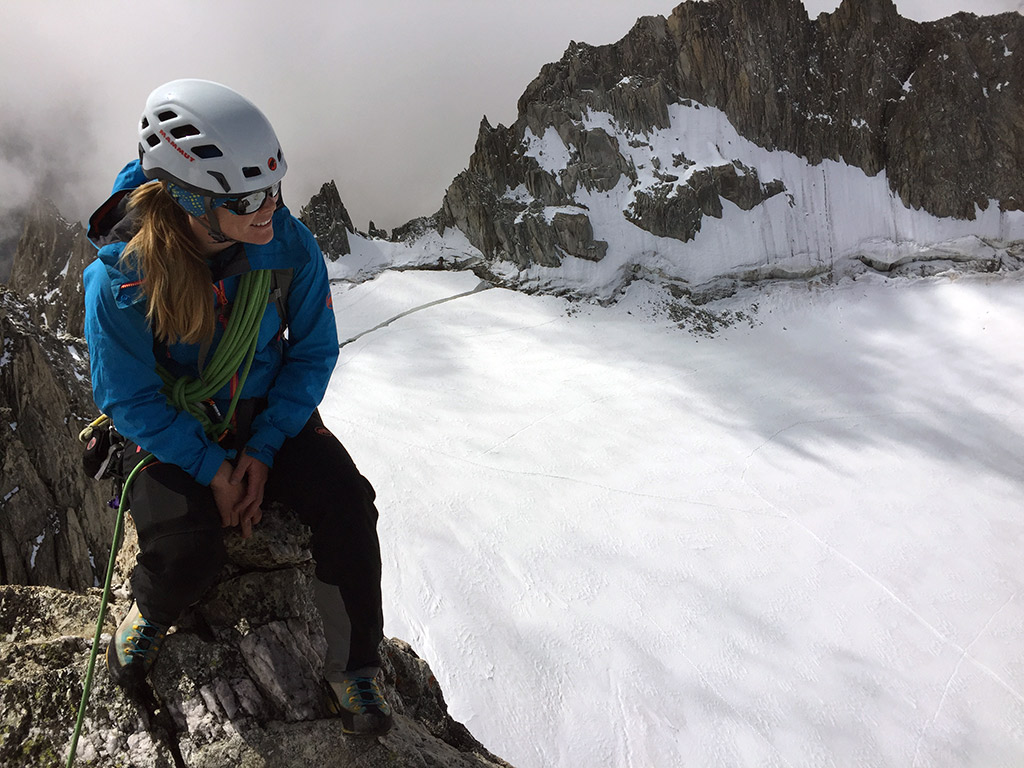
Erin Smart on the summit of Aiguille d’Entrèves in the summer of 2017, Chamonix, France. (Photo Credit: Nathaniel White)
What are your packing pro tips?
Line the inside of your pack with a big plastic garbage bag, and then pack your items in the bag … to ensure that all your items will be dry when you get to camp.
The more loose items you pack, the better the weight will be distributed, and you will be able to fill in the nooks and crannies better, leaving less air space. The only stuff sack I use is a compression sack for my sleeping bag. If you like the small sacks to help keep things organized at camp, consider just packing them separately and then organizing once at camp. But remember, every ounce counts.
The best crampon bag is a USPS Priority Mail Tyvek envelope. They’re very lightweight, and free at your local post office.
How do you keep your gear dry throughout a multiday trip?
Once I get in my tent for the night, I put my gloves inside my jacket, flat against my body. Your body warmth will help dry them out overnight. I usually have a dry pair of socks to sleep in, but the socks I use during the day I either keep inside the sleeping bag, or do the same as the gloves. Boots are hard, because you obviously don’t want to sleep with those in your sleeping bag, but you can take out the insoles and keep those inside the bag.
Dallas Glass
International Mountain Guides and instructor trainer for the American Institute for Avalanche Research and Education (AIARE), Seattle
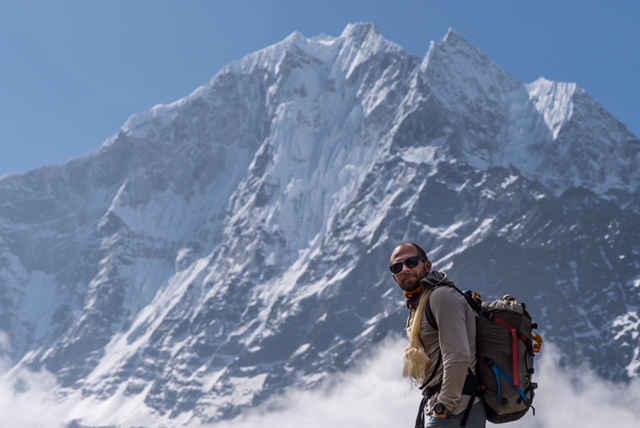
Photo Credit: Patrick Mauro
What’s one thing that backcountry enthusiasts should keep in mind during the spring season?
When I teach avalanche awareness to backcountry enthusiasts who are interested in spring and summer mountaineering in snowy environments, I always repeat the same mantra: “Big changes mean big problems.” We tend to overthink avalanche phenomena, and a really simple way to think about it is that whenever there’s been a big change in the weather, there are going to be more red flags in avalanche conditions. This is true for almost all weather conditions: If it’s been raining for days and then is suddenly snowing, if it’s been storming for days and is suddenly bluebird, or if it’s been sunny and then it’s suddenly hailing. Be really wary for the first day or two after a big change. Be patient.
What’s your go-to snack?
I’m a big fan of a salad in a bag. You know, the premade kind you can buy at a grocery store—you can find them anywhere. Just pop the bag with a pen to let the air out, then compress it to pack inside your backpack. You have to eat it on your first or second night in the mountains, but it’s so amazing to have fresh vegetables in the backcountry.
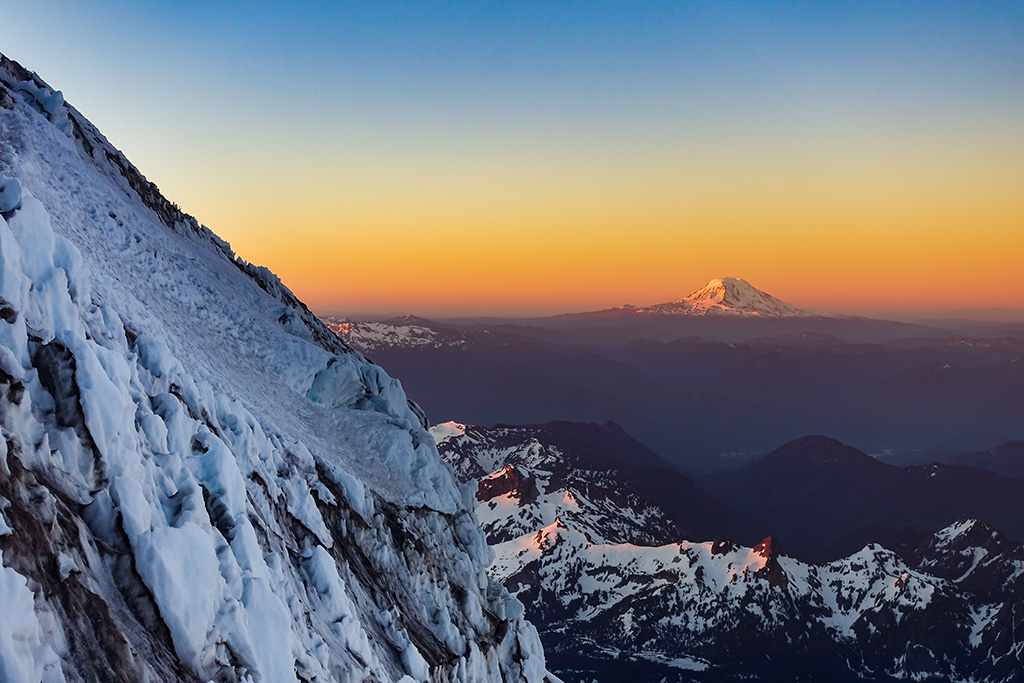
Sunrise on the Kautz Glacier of Mt. Rainier looking toward Mt. Adams. (Photo Credit: Patrick Mauro)
What are your packing pro tips?
When you’re stuffing your sleeping bag into a stuff sack, turn it inside out. When we’re using heavier sleeping bags during the spring and fall—especially those made with water-resistant fabrics—the outer fabric is often designed to be impermeable to moisture and air. But the fabric that lines the inside of your sleeping bag is thinner and more breathable. If you turn your sleeping bag inside-out when you stuff it, more air can escape the air-permeable lining fabric—which means you can get the whole bag stuffed into a smaller container.
The extra gear required for spring mountaineering can get heavy, so slim down by eliminating redundancies in your electronics. Instead of bringing a GPS, camera and smartphone, just bring your phone (preloaded with Gaia GPS) and an extra battery pack.
During the day, I wear my sunglasses and store my headlamp in the [sunglasses] case, which keeps it from accidentally turning on inside my backpack.
How should you train for mountaineering?
Whatever activity you’re most excited about. If you don’t like to run, don’t pick that activity as your training tool. Pick something you’ll stick with. Work on strength, cardiovascular fitness and balance.
Mallorie Estenson
Mountain Madness guide, Bellingham, Washington
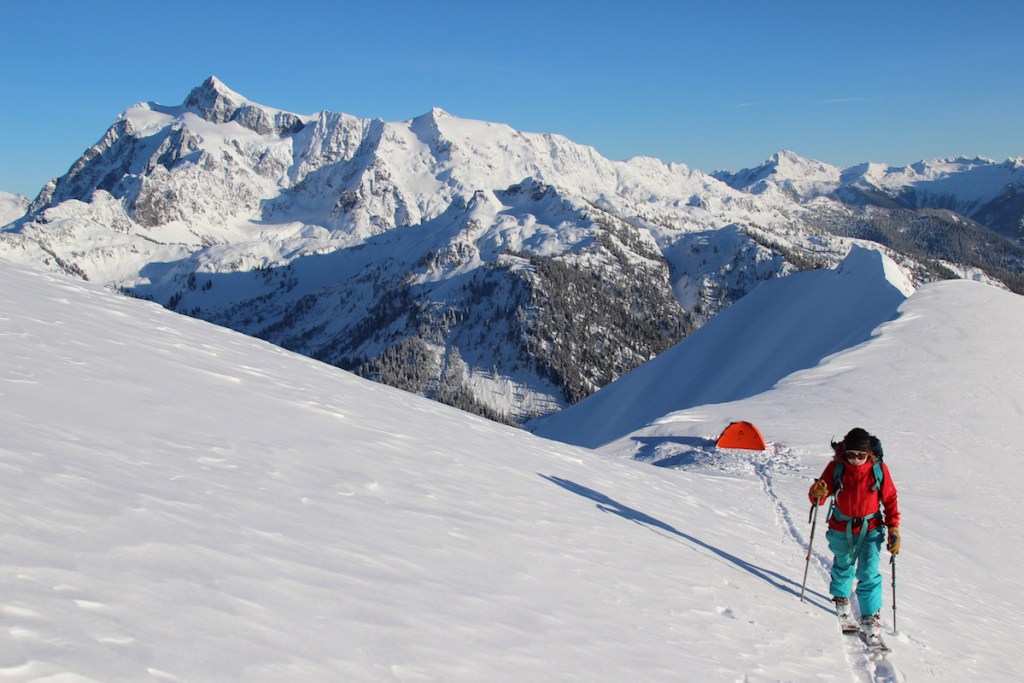
Photo Credit: Tim Black
What pieces of gear are always in your pack?
My sun hoodie has been a game-changing piece of gear for me. Lots of brands make them, but as long as they have a big hood to protect my face and neck, I swear by a good sun-protective layer. I’m also a big fan of wearing a Buff and trucker’s hat.
Life is too short to drink instant coffee. Get a pour-over setup that doesn’t require a filter. I also use an insulated Hydro Flask so I can take my coffee anywhere.
How do you find motivation on a tough day of climbing?
I try to catch myself, stop, and look around and appreciate how lucky I am to be where I am. Every time I’m in the mountains, I feel a profound sense of gratitude for the views, the company and the gear we have these days—it astounds me that people climbed without the luxuries of GORE-TEX®, puffy jackets and breathable layers back in the day. If they can do without, I most certainly can do it with my modern, luxurious gear.
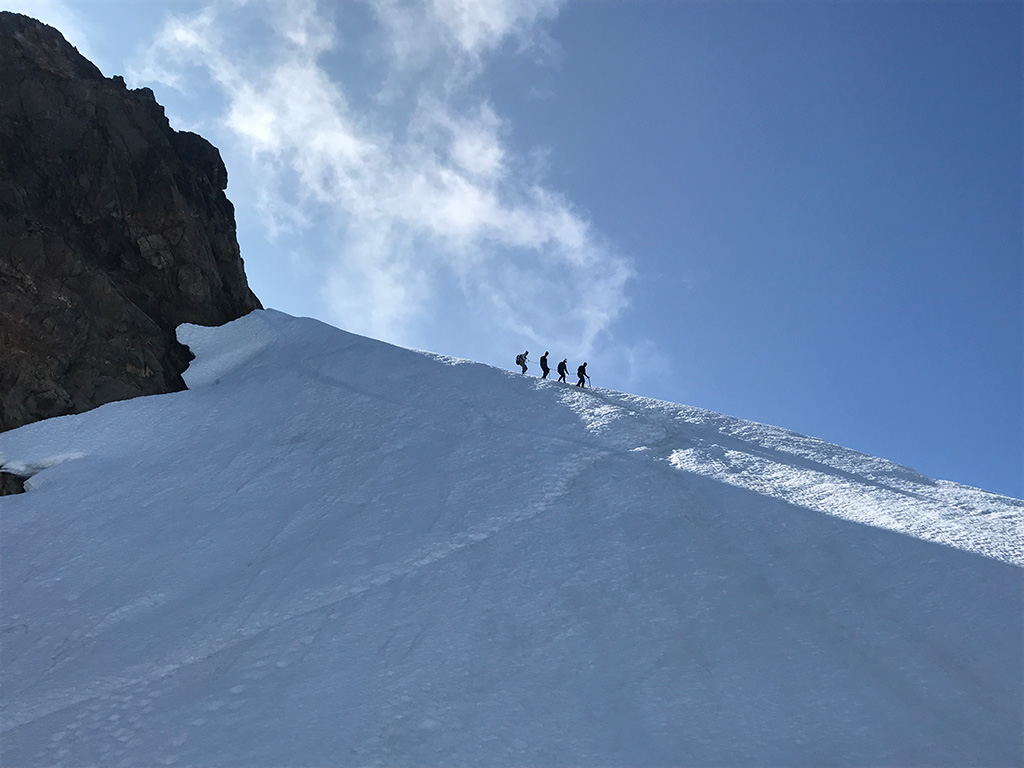
Mt. Olympus, Olympic National Park, Washington (Photo Credit: Charlotte Austin)
Robert Jantzen
International Mountain Guides, Ashford, Washington

Photo Credit: Caya Johnson
How do you stay dry in the shoulder season?
For rainy spring days when temperatures hover just above freezing, staying dry is the only way to stay comfortable in the mountains. Double up on GORE-TEX. You can either switch it out midway through the day as things get wet, or simply wear two jackets at the same time. Guides do this on bad weather days up the Muir Snowfield on Mount Rainier with good success.
What can you do now to prepare for summer climbs?
Use the not-so-ideal spring weather as a chance to scout approaches to climbs you want to do when the weather is better. These shorter outings can get you out even when conditions aren’t great for climbing, and they can often lead to better success in the summer. Take a little extra weight in your pack in the form of a gallon jug of water and your summer training starts early.
Make your route plans now. Guides make detailed plans for every climb: They get familiar with land management requirements, approach notes, bearings, waypoints and time estimates. They note key route-finding markers on the climb itself, and—most importantly—they prepare a very detailed plan for the descent. This preps you to stay on track, lets you relax, and reduces failure due to poor planning. Scheming for future climbs often leads to later success.
What’s the best way to maximize your weekend adventures?
Throughout your workweek, keep an eye on weather trends over a wide area. If you know on Wednesday or Thursday that the weather has been good a 4-hour drive away, you can start your preparations for the weekend early. Run your errands in advance and go climbing.
